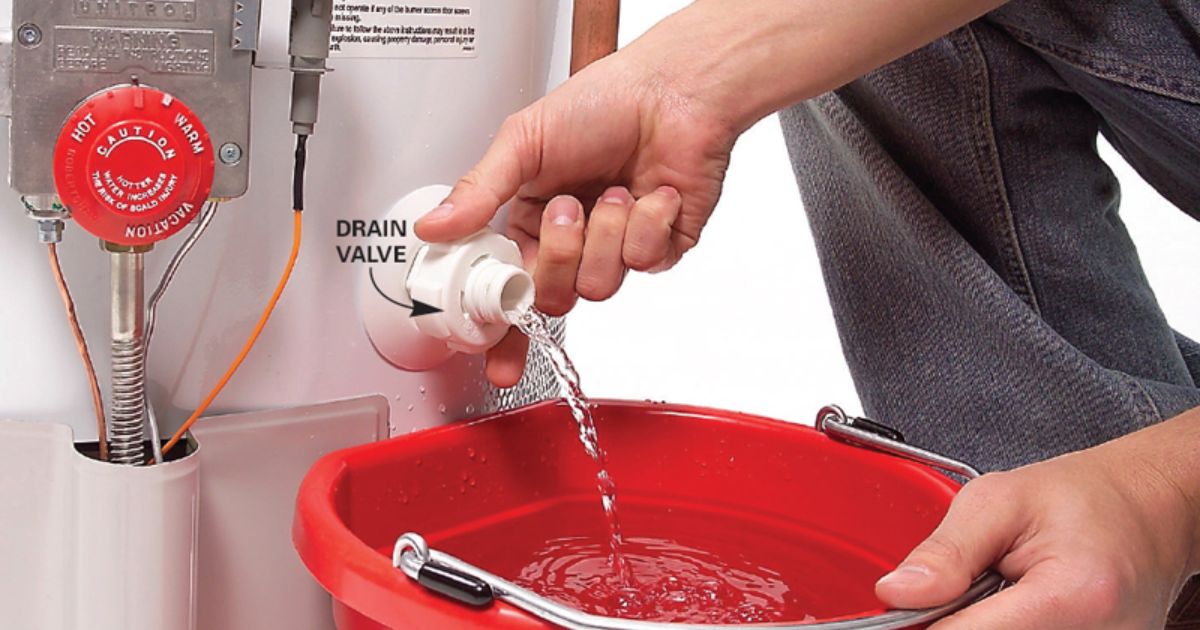When it comes to water heater maintenance, one critical question that often arises is, “How long does it take to drain a water heater?” Draining a water heater is the process of removing accumulated sediment and mineral deposits from the tank. Over time, these impurities can hinder the heater’s performance and lead to various issues.
Now, imagine the water heater in your home quietly working away to provide you with a steady supply of hot water. It’s a reliable appliance, but, like any other, it requires some TLC. The process of draining your water heater may not be something you think about often, but it’s a maintenance task that can significantly impact your heater’s efficiency and lifespan.
We’ll discuss not only how to perform this maintenance task but also explore the factors that influence the time it takes to complete the process. By the end of this article, you’ll have a clear understanding of why and how to drain your water heater and, of course, the answer to that common question: “How long does it take to drain a water heater?” So, let’s dive in.
Why Should We Drain My Water Heater?

Draining your water heater is a crucial maintenance task that offers several important benefits. Here are the key reasons why you should periodically drain your water heater:
Prevent Sediment Buildup
Over time, sediment, minerals, and debris accumulate in the bottom of your water heater tank. This buildup can hinder the heater’s performance, reducing its efficiency. Draining the tank removes these impurities, ensuring a more efficient heating process.
Extend Lifespan
Regular maintenance, including draining, can significantly extend the lifespan of your water heater. Sediment and mineral buildup can cause corrosion and damage to the tank, which can lead to the need for costly repairs or a premature replacement. By preventing this buildup, you protect your investment and increase the longevity of your water heater.
Improve Energy Efficiency
A water heater with a clean tank operates more efficiently. When sediment accumulates, it insulates the bottom of the tank, making it harder for the heating element to do its job. This can result in increased energy consumption, higher utility bills, and slower heating times. Draining the tank helps your water heater run at peak efficiency, saving you money in the long run.
Enhance Hot Water Quality
Sediment and mineral deposits in the tank can affect the quality of your hot water. It may lead to discolored or foul-smelling water. By regularly draining the tank, you can maintain clear and clean hot water, ensuring that it remains safe for bathing, cooking, and other household uses.
Prevent Rust and Corrosion
Sediment and minerals at the bottom of the tank can create a corrosive environment. Over time, this can lead to rust and damage to the tank’s interior. Draining the tank removes these elements and helps prevent the formation of rust, which can be detrimental to the water heater’s structural integrity.
Draining a Water Heater: The Process
The Basics of Draining
Before we get into the time it takes to drain a water heater, let’s ensure we’re all on the same page regarding the process itself. Draining a water heater is a preventive maintenance task that involves removing the sediment and mineral buildup that naturally occurs over time. This buildup can reduce the heater’s efficiency, increase energy consumption, and even lead to damage.
Factors Affecting Drain Time
The time it takes to drain a water heater can vary, and several factors come into play. First and foremost, the size of your water heater matters. Larger tanks naturally hold more water and, consequently, take longer to drain. Additionally, the amount of sediment and mineral deposits in your tank influences the time it takes to complete the task.
| Factors | Impact on Drain Time |
| Tank Size | Larger tanks take longer to drain. |
| Water Temperature | Higher temperatures may increase drain time. |
| Sediment Accumulation | Heaters with sediment build-up may drain more slowly. |
| Drain Method | Gravity or pump methods may vary in draining speed. |
| Water Pressure | High water pressure can expedite the draining process. |
| Valve Condition | A well-maintained valve allows for efficient draining. |
This table summarizes the key factors that affect the time it takes to drain a water heater. It provides valuable insights into what homeowners can expect when performing this maintenance task. If you have any further requests or need additional details, please feel free to ask.
An Estimate
While it’s difficult to provide a precise time frame, on average, draining a water heater can take anywhere from 30 minutes to an hour. This time estimate can change based on the size of your water heater, the extent of sediment buildup, the water pressure in your area, and what trips the reset button on a hot water heater. However, the process is relatively straightforward, and with the right steps, you can efficiently drain your water heater.
Why Drain Your Water Heater?
Prolonging Longevity
One of the primary reasons for draining your water heater is to extend its lifespan. By removing sediment and mineral deposits, you reduce the risk of corrosion and damage to the tank. This proactive maintenance can save you from the cost and inconvenience of prematurely replacing your water heater.
Enhancing Efficiency
Another crucial benefit of draining your water heater is improved energy efficiency. When sediment accumulates at the bottom of the tank, it acts as an insulator, making it harder for the heating element to do its job. This can result in higher energy bills and slower heating times. By draining the tank, you enhance the heater’s efficiency and save money in the long run.
Ensuring Quality Water
Sediment and mineral deposits can also impact the quality of your hot water. Discolored or foul-smelling water is a common sign of sediment buildup. Regular draining ensures that your hot water remains clear and clean, making it safe for various household uses, from bathing to cooking.
FAQs
Q.1 How often should I drain my water heater?
It’s recommended to drain your water heater annually to prevent sediment buildup.
Q.2 Can I drain my water heater without professional help?
Yes, you can drain your water heater yourself by following the outlined steps, but always ensure safety precautions are in place.
Q.3 What’s the purpose of the pressure relief valve?
The pressure relief valve allows air into the tank, aiding in the smooth flow of water during the draining process.
Q.4 Are there any specific signs that indicate a need for immediate water heater draining?
If you notice rust-colored water or a significant decrease in hot water supply, it’s a sign that your water heater needs immediate attention.
Q.5 What’s the impact of not draining my water heater regularly?
Neglecting to drain your water heater can lead to decreased efficiency, higher energy bills, and potential damage to the unit. Regular maintenance is essential for its longevity and performance.
Conclusion
First and foremost, this maintenance ritual extends the lifespan of your water heater. Regularly removing sediment and mineral deposits helps prevent corrosion and damage to the tank, sparing you the expense and inconvenience of an early replacement.
Moreover, this practice enhances energy efficiency. Sediment buildup can act as an insulator, causing your heating element to work harder, resulting in higher energy bills and longer heating times. Consistent draining ensures your water heater operates at its best, leading to significant savings over time.
In addition to financial benefits, regular maintenance safeguards the quality of your hot water supply. Sediment-laden water can be discolored and have an unpleasant odor, potentially posing health concerns. By preserving the purity of your hot water through draining, you ensure that your daily activities, from bathing to cooking, can be carried out without any worries.











